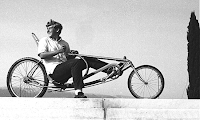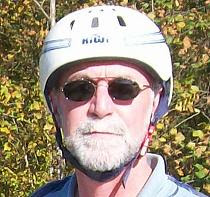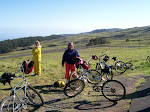I wasn’t going to blog about this but decided since it is becoming more of an occurrence I really shouldn’t let it go.
I was out taking a short test ride on my son’s bike around the neighborhood before he moves with it to Chicago.
In Akron there is new program called SHARO, short for Share the Road. The city painted some nice bicycle emblems on two major feeder streets designed to raise the awareness of bicyclers out in car traffic.
After T-boning a semi-flatbed truck on a motorcycle when I was 20 years old I pretty much stay out of heavy traffic on my bicycle simply because cars weigh thousands of pounds and I don’t.
As this street feeds west from downtown it widens to accommodate a center turn lane designed for cars coming both directions to get out of the main traffic flow to ready for their turn.
In order to get back home I had to cross this busy street, not a big deal if you obey the traffic laws and watch yourself. I waited until all of the eastbound downtown traffic had cleared and crossed the two lanes of traffic into the wide center turn lane to maneuver my way to my next street.
I timed it so that by the time I would be even with my street the five cars approaching from downtown headed westbound would be past and nice big hole would open up for me to exit through.
I did a quick glance over my right shoulder to make sure no cars were coming up behind me turned back to front just as the large green four door whipped into the center turn lane to pass the cars in front of him. He was doing about 40 MPH and I figured I had about 2 seconds until the head on impact.
Luckily for me he just happened to spot me and yanked the wheel back into his lane of traffic nearly hitting me. It all happened so quickly it was almost a nonevent. But having survived a similar incident some 30 years ago I know I would have died or suffered life threatening injuries, again.
I noticed three things quickly: 1) I had put myself in that situation and was ultimately responsible for my own well being 2) THIS WAS A TURN ONLY LANE NOT A PASSING LANE 3) by the looks of the guy and his car I would have been a hit and run victim because I doubt he had insurance and would not have wanted to talk to the police.
Needless to say I have become even more cautious and less trusting of traffic to do the right thing. Especially with all the cell phone and texting distractions let alone the drinking and driving.
I normally stick to the trails and neighborhood streets. But reality rules and one must occasionally get out into traffic flow. Rule of thumb: we've got one flesh and bone body not encased in by thousands of pounds of steel and no seatbelt. Be careful because it’s usually the other guy that will nail you.
















 This looks like a relaxing way for a tandem crew to ride. Take a good look at those seats! For more styles such as cargo bikes and Pedi cabs visit
This looks like a relaxing way for a tandem crew to ride. Take a good look at those seats! For more styles such as cargo bikes and Pedi cabs visit 



